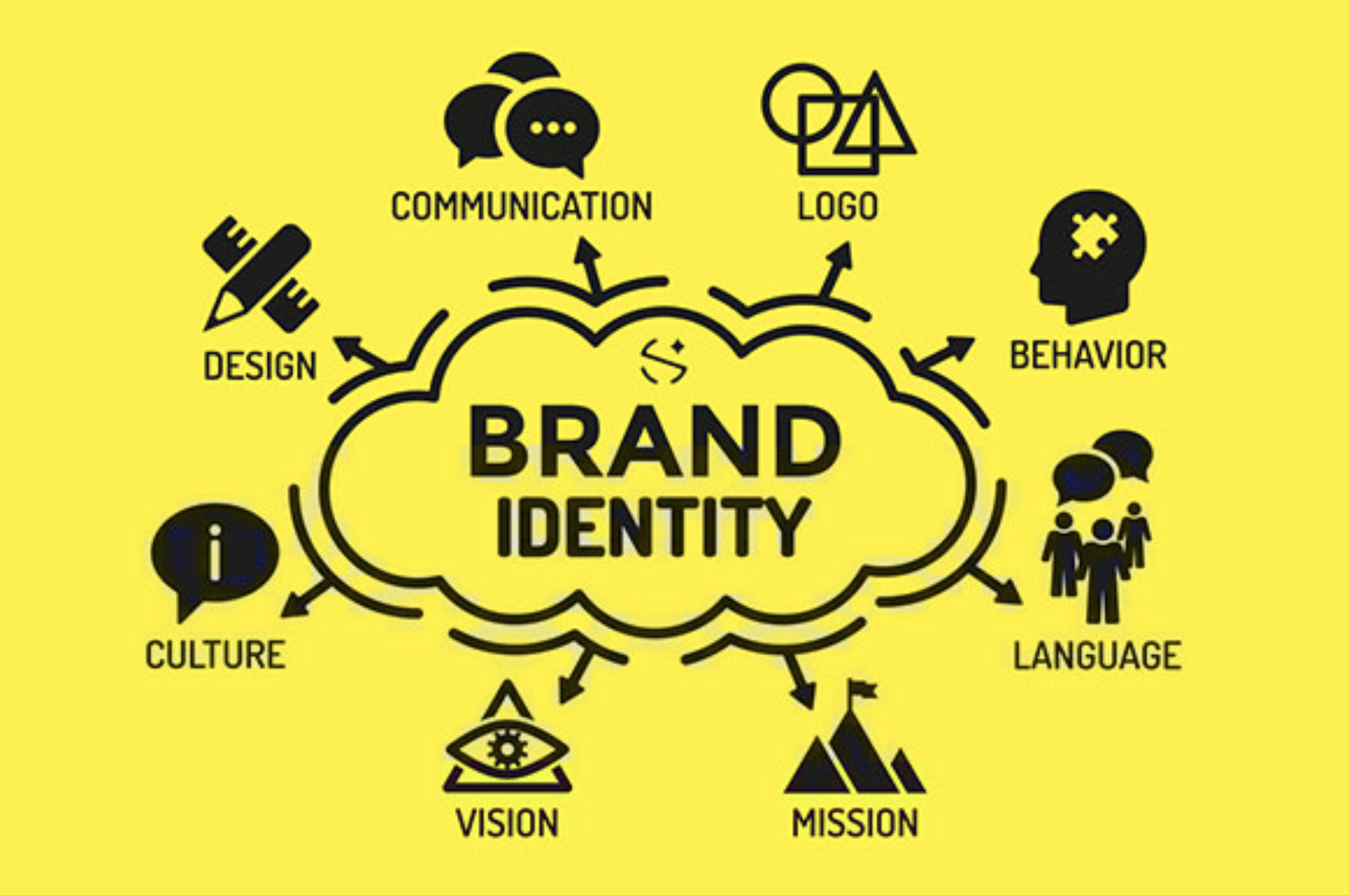Brand Identity

Brand identity is the collection of visual and non-visual elements that define a brand and set it apart from competitors. It includes the name, logo, tagline, typography, color scheme, packaging, messaging, and any other element that represents the brand’s values, personality, and purpose. A strong brand identity helps to create a unique and recognizable image that resonates with customers and builds brand loyalty.
The name of a brand is often the first point of contact with potential customers, and it should be memorable, easy to pronounce and spell, and reflect the brand’s personality and values. The logo is the visual representation of the brand and should be distinctive, memorable, and easily recognizable. It should also convey the brand’s values and personality through its design, color, and style.
The tagline is a brief phrase that captures the essence of the brand and its mission. It should be memorable and meaningful, and it should reinforce the brand’s key messages and values. Typography refers to the style and design of the text used in the brand’s marketing materials. It should be consistent with the brand’s personality and values and should be legible and easy to read.
Color is an essential element of brand identity, and different colors can evoke different emotions and moods. Brands should choose colors that align with their values and personality and that create a unique and recognizable visual identity. Packaging is also a critical element of brand identity, as it is often the first physical contact that customers have with a product. The packaging should be consistent with the brand’s values and personality and should be designed to appeal to the target audience.
Messaging is the way in which a brand communicates with its customers, and it should be consistent with the brand’s personality and values. The messaging should be clear, concise, and meaningful, and it should reinforce the brand’s key messages and values.
A strong brand identity helps to build brand recognition and loyalty, and it can also help to differentiate a brand from its competitors. When customers can easily recognize a brand and understand its values and personality, they are more likely to develop an emotional connection with the brand and become loyal customers.
To create a strong brand identity, brands should conduct research to understand their target audience and develop a clear understanding of their values, personality, and purpose. They should also develop a brand strategy that outlines how they will communicate with customers and how they will differentiate themselves from competitors. Once the brand strategy is in place, brands can begin to develop the visual and non-visual elements of their brand identity, ensuring that each element is consistent with the brand’s values and personality.
In conclusion, brand identity is the collection of visual and non-visual elements that define a brand and set it apart from competitors. It includes the name, logo, tagline, typography, color scheme, packaging, messaging, and any other element that represents the brand’s values, personality, and purpose. A strong brand identity helps to build brand recognition and loyalty, and it can also help to differentiate a brand from its competitors.